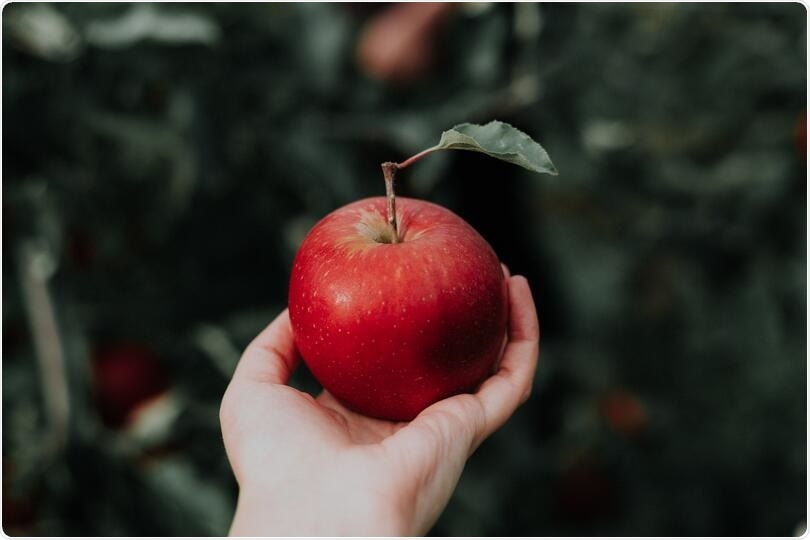Apples are one of the oldest and most identifiable fruits worldwide. Apples are somewhat spherical besides the characteristic dimple at the top where the stem grows. How do apples attain that unique shape?

Image Credit: Harvard John A. Paulson School of Engineering and Applied Sciences.
Recently, a group of physicists and mathematicians employed findings, laboratory experiments, theory, and computation to comprehend the growth and formation of the cusp of an apple.
The observations have been published in the journal Nature Physics.
Biological shapes are often organized by the presence of structures that serve as focal points. These focal points can sometimes take the form of singularities where deformations are localized. A ubiquitous example is seen in the cusp of an apple, the inward dimple where the stalk meets the fruit.”
L Mahadevan, Study Senior Author and Lola England de Valpine Professor, Applied Mathematics, Harvard John A. Paulson School of Engineering and Applied Sciences
Mahadevan is also a professor of Organismic and Evolutionary Biology, and of Physics at Harvard John A. Paulson School of Engineering and Applied Sciences.
Mahadevan earlier created a simple theory to elaborate the formation and growth of apples; however, the project began to yield results when the experts linked observations of real apples at various growth stages and gel experiments to mirror the growth together with theory and computations.
The scientists gathered apples at different growth stages from an orchard at Peterhouse College at the University of Cambridge in the United Kingdom (the alma mater of another renowned apple lover, Sir Isaac Newton).
The researchers used those apples to map the growth of the dimple, or cusp as it was known eventually.
To comprehend the evolution of the shape of the apple and the cusp specifically, the scientists turned to a mathematical theory called singularity theory, a long-standing one. Singularity theory is employed to elaborate a host of various phenomena, from black holes to more routine examples like the light patterns at the base of a swimming pool, droplet breakup, and crack propagation.
What is exciting about singularities is that they are universal. The apple cusp has nothing in common with light patterns in a swimming pool, or a droplet breaking off from a column of water, yet it makes the same shape as they do. The concept of universality goes very deep and can be very useful because it connects singular phenomena observed in very different physical systems.”
Thomas Michaels, Study Co-Lead Author, University College London
Thomas Michaels was a former postdoctoral fellow at SEAS.
Assembling from this theoretical framework, the scientists employed numerical simulation to comprehend how differential growth between the fruit cortex and the core results in the development of the cusp.
Using gel that swelled over time, the researchers later validated the simulations with tests that replicated the growth of apples. The tests illustrated that varying growth rates between the bulk of the apple and the stalk region led to the dimple-like cusp.
Being able to control and replay morphogenesis of singular cusps in the laboratory with simple material toolkits was particularly exciting. Varying the geometry and composition of the gel mimics showed how multiple cusps form, as seen in some apples and other drupes, such as peaches, apricots, cherries, and plums.”
Aditi Chakrabarti, Study Co-Author and Postdoctoral Fellow, Harvard John A. Paulson School of Engineering and Applied Sciences
The researchers observed that the basic fruit anatomy together with mechanical instability might play combined roles in inducing multiple cusps in fruits.
Mahadevan also says, “Morphogenesis, literally the origin of shape, is one of the grand questions in biology. The shape of the humble apple has allowed us to probe some physical aspects of a biological singularity. Of course, we now need to understand the molecular and cellular mechanisms behind the formation of the cusp, as we move slowly towards a broader theory of biological shape.”
Source:
Journal reference:
Chakrabarti, A., et al. (2021) The cusp of an apple. Nature Physics. doi.org/10.1038/s41567-021-01335-8.